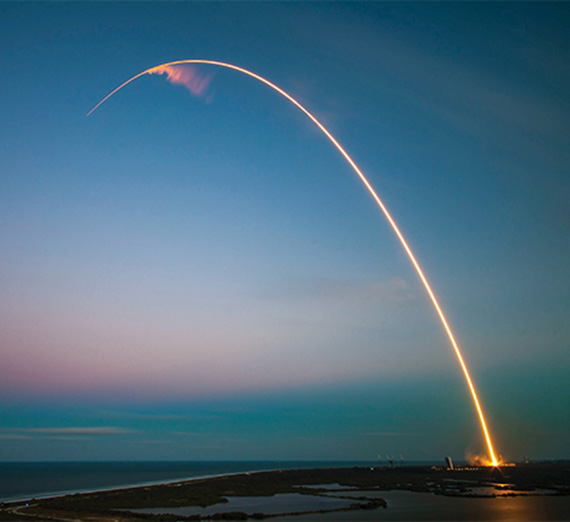SpaceX Rocket Man Ryan Kellogg

Ryan Kellogg had a hand in the design, test and manufacturing of the propulsion systems for SpaceX’s Dragon 2 spacecraft and Starship rocket.
Dragon 2 is the spacecraft most often used by NASA to take people and cargo to the International Space Station on top of SpaceX’s Falcon 9 rocket.
Kellogg feels both appreciation for the engineering behind the project and paranoia over the hardware he’s worked on as he watches “his” hardware take off, reminding himself of the gravity of the mission. He can’t help but talk to himself as each rocket leaves the launchpad: “Push. Let us have done our work correctly,” he says under his breath. The caution and fear remain even though he has high confidence in the work he and his SpaceX colleagues have done to get the vehicles to flight.
Kellogg worked five-and-a-half years in Los Angeles on the Dragon 2 spacecraft following his graduation from Gonzaga in 2014 with a degree in mechanical engineering. He then spent two years working on Starship in a secluded part of Texas near Boca Chica, which bears resemblance in its isolation and furious pace to the village in New Mexico where Robert Oppenheimer and his associates built the atomic bomb as outlined in the 2023 movie.
“When I arrived there in early 2020, there were a few hundred of us working at a facility resembling a temporary military outpost. When I left in December 2021, there were probably a couple of thousand people regularly working on site that was beginning to resemble a full town,” he says.
Kellogg took a two-year break, the last 20 months to serve Gonzaga as academic director for the Center for Engineering Design and Entrepreneurship, spending a substantial portion of his time lining up industry and government sponsors for senior design projects, and serving as the administrator connecting student teams with their faculty advisers and project sponsors.
But you can’t keep a good rocket man away from the production line too long. In February 2024 he returns to SpaceX to continue work on propulsion and propellant systems for the Starship.
Kellogg says the space manufacturing industry has received a significant resurgence due to vertical integration. That means a lot of launch companies have brought manufacturing in-house, shortening the duration from designing to manufacturing to flying. The cost of labor and supplies has increased, but by bringing production in-house they aren’t waiting for long shipments or lead times to begin the next stages of manufacturing. By the time one phase is completed, the next phase is already underway.
This has reduced costs and made space innovation more readily available. Efficiency achieved.
A sizable portion of Kellogg’s work at SpaceX was on anomaly investigations, how to fix designs that occasionally fail. Kellogg explains: “Rocketry can be quite explosive, and especially challenging to investigate when they fail a long way from home.
“We’ve seen a significant uptick in space travel recently, and the Dragon 2 is flying quite often.
“I would not be surprised to see a future with multiple crewed flights into space per day, if not per hour in my lifetime,” Kellogg says. “Plausibly in the next two decades.”
